Council Approves BRT Route Restrictions
Learn more about what alderman Bauman claims is a route worth studying
Without a second of floor debate the Milwaukee Common Council unanimously approved restricting the use of dedicated lanes on a substantial portion of the county’s proposed East-West Bus Rapid Transit line.
The measure, which was co-sponsored by council members Michael Murphy and Robert Bauman, solidifies the stance that the city will not dedicate lanes on W. Bluemound Rd. west of N. Hawley Rd.
The approximately nine mile long project is proposed to run from a park and ride lot just northwest of the Milwaukee Regional Medical Center to the proposed The Couture tower on on the lakefront. The route would run through Wauwatosa and Milwaukee using W. Bluemound Rd. and Wisconsin Ave.
At a committee hearing earlier this month the two council members accused the county of breaking good faith on the project. At the hearing a prescient Ald. Jim Bohl noted that the resolution likely has unanimous support from the full council, stating “to me this is a waste of time” and “a lesson in futility… I see this passing the council 15-0.”
Staunch public transit advocate Bauman took things further, stating “on my recent trip to Cleveland where I rode bus rapid transit ad nauseum, I learned, I think, we’re putting bus rapid transportation on the wrong corridor.”
The BRT project is seeking a grant from the federal government to fund up to 80 percent of its estimated $48 million cost. The project would be operated by the Milwaukee County Transit System.
For more on the restrictions and BRT project, see our coverage from the hearing.
Bauman Talks BRT
I followed up with Ald. Bauman regarding his thoughts for what the right corridor was. The alderman frequently travels the country and regularly rides public transit in other metropolitan areas. He’s also a historian on all things transit, even having once operated a firm that reconstructed passenger rail cars and equipment.
The alderman noted that he’s in favor of dedicated lanes for the rapid transit proposal from Interstate 43 and W. Wisconsin Ave. to the Wisconsin Avenue bridge over the Miller Valley at N. 38th St. He notes that they fit there, unlike on W. Wisconsin Ave. from the freeway to the Milwaukee River.
Would a bus-only road fit in that corridor? An approximately 400-page study from 1996 says so. Bauman says the plan, which he still maintains a copy of, involved relocating the existing tracks to the edge of the roughly 100-foot-wide right-of-way. He notes that light rail vehicles and bus rapid transit vehicles are roughly the same width, and operate in the same right-of-way in cities such as Pittsburgh and Seattle.
The 32-mile, regional plan, which ultimately died at the ends of Republican legislators and talk radio, would have built stations along W. State St. and near the Wauwatosa Village. Bauman notes that there are more riders in that corridor than along far western Wisconsin Ave. or W. Bluemound Rd., and vehicles would be able to move substantially faster on their own road.
In his testimony at the hearing earlier in July the alderman chided the bus rapid transit planning team for even failing to study this option to point of getting a rough cost estimate.
The light rail plan:
What Cities Are Getting It Right?
The alderman notes that in his travels “the gold standard” for bus rapid transit is the Orange Line in Los Angeles. The 18-mile line provides roughly 22,000 rides a day in a corridor that Bauman estimates is approximately 80 percent exclusive right-of-way. The line, which opened in 2005, uses special buses and a number of speed-enhancing techniques proposed for Milwaukee’s system including off-bus ticketing.
Unlike the Milwaukee line, the system doesn’t operate entirely on city streets. Almost all of the route is on a bus-only road in a former railroad corridor. Paralleling the private road is a lengthy bike and pedestrian trail.
Bauman, clearly thinking about possible future extensions of the Milwaukee Streetcar, also noted that Pittsburgh and Seattle have tunnels where buses and light rail use the same dedicated right-of-way. The buses run atop rails embedded in the street, but on a transit-only lane or road allowing for speed and operational efficiencies. He notes that Pittsburgh leverages this dual-use dedicated corridor setup in a number of locations to improve their basic bus service while facilitating a regional light rail system.
Other cities have already overhauled express bus systems to become rail systems. The alderman notes that the highly successful Kansas City streetcar line that recently opened effectively replaces an express bus line and is generating increased ridership in the corridor between Downtown and Union Station. Future expansions of the system are already planned.
The alderman has also ridden the Silver Line in Boston. A series of co-branded bus rapid transit lines, the Silver Line operates in a wide variety of configurations including in mixed traffic on the highway, in a dedicated tunnel like a subway and on dedicated and mixed lanes on city streets. While he admits his observations are anecdotal, he noticed a number of vehicles encroaching on the Silver Line while it operates on city streets, something that will have to be addressed with the Milwaukee system.
With years before the the bus rapid transit system could open or possibly even secure federal funding from President Donald Trump, expect Bauman to continue to push to build a regional system that more closely resembles light rail than the bus system Milwaukee currently has.
Bus rapid transit:
If you think stories like this are important, become a member of Urban Milwaukee and help support real independent journalism. Plus you get some cool added benefits, all detailed here.
If you think stories like this are important, become a member of Urban Milwaukee and help support real, independent journalism. Plus you get some cool added benefits.
More about the East-West BRT Line
- Transportation: Off-Board Fare Collection Begins on Connect 1 - Graham Kilmer - Apr 16th, 2024
- Streetcar Begins Daily Service To The Couture, BRT Will Soon Follow - Jeramey Jannene - Apr 11th, 2024
- Transportation: Connect 1 Ridership Continues to Grow - Graham Kilmer - Nov 23rd, 2023
- Transportation: Battery Electric Buses Will Return This Fall - Graham Kilmer - Sep 8th, 2023
- Transportation: MCTS Pulling New Battery Electric Buses From the Road - Graham Kilmer - Aug 24th, 2023
- MKE County: Local Leaders Celebrate Launch of BRT Service - Graham Kilmer - Jun 5th, 2023
- Transportation: Milwaukee’s First Bus Rapid Transit Line Is Open for Business - Graham Kilmer - Jun 4th, 2023
- Transportation: New Bus Rapid Transit Line Launches Sunday, GoldLine Ends - Graham Kilmer - Jun 3rd, 2023
- Transportation: Federal Funds Creating Two New East-West BRT Stations - Graham Kilmer - May 19th, 2023
- Transportation: First 4 Months of BRT Rides Will be Free - Graham Kilmer - May 9th, 2023
Read more about East-West BRT Line here
Political Contributions Tracker
Displaying political contributions between people mentioned in this story. Learn more.
Eyes on Milwaukee
-
Church, Cupid Partner On Affordable Housing
 Dec 4th, 2023 by Jeramey Jannene
Dec 4th, 2023 by Jeramey Jannene
-
Downtown Building Sells For Nearly Twice Its Assessed Value
 Nov 12th, 2023 by Jeramey Jannene
Nov 12th, 2023 by Jeramey Jannene
-
Immigration Office Moving To 310W Building
 Oct 25th, 2023 by Jeramey Jannene
Oct 25th, 2023 by Jeramey Jannene
Transportation
-
MCTS Adds 28 New Buses
 Jul 13th, 2024 by Graham Kilmer
Jul 13th, 2024 by Graham Kilmer
-
MCTS Designing New Bus Shelters
 Jul 10th, 2024 by Graham Kilmer
Jul 10th, 2024 by Graham Kilmer
-
MCTS Updates RNC Bus Detours To Better Serve Downtown, Riders
 Jul 9th, 2024 by Jeramey Jannene
Jul 9th, 2024 by Jeramey Jannene


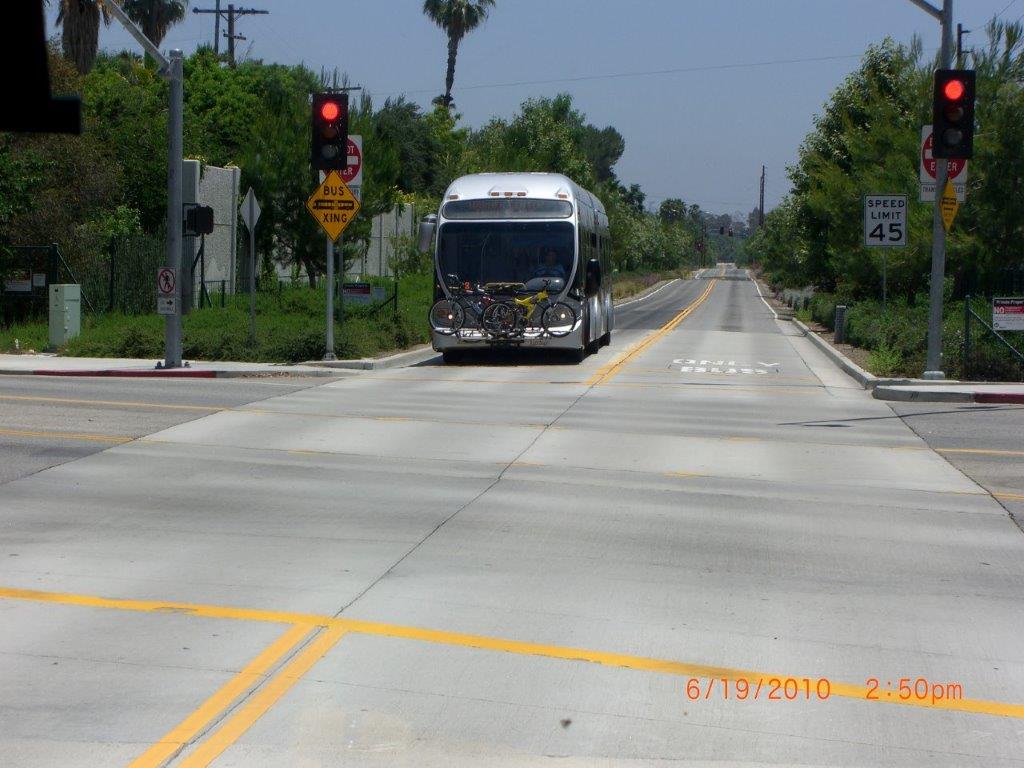
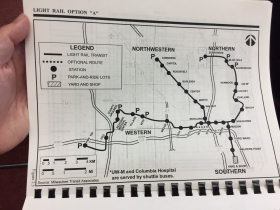
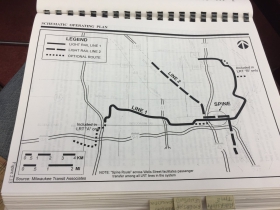
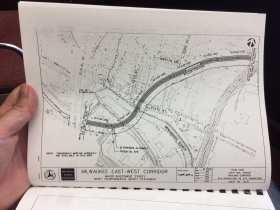
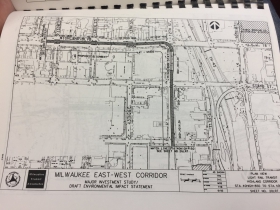
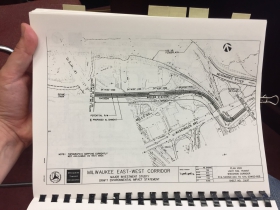
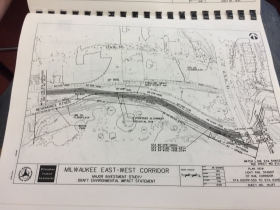
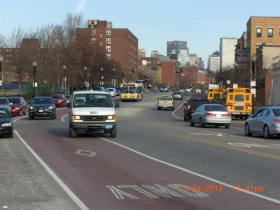
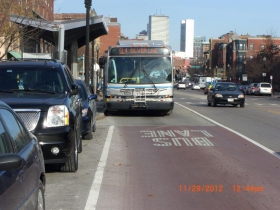
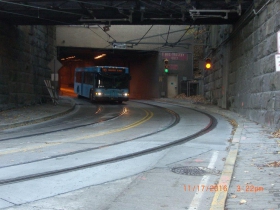
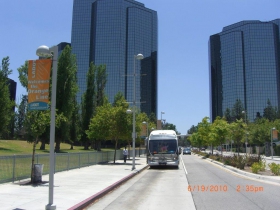
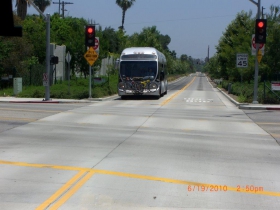
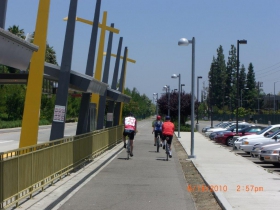




















Interesting! I’ve always thought we need to explore the high power line system as well around this city. The right of way is there seeing as that’s where the old rail lines used to run, so we do know we could put something there.
And seeing as this state is so hyper anti-rail, building a full system of BRT would be a way to get around it until they ridership climbs create an undeniable demand for rail.
Don’t let perfection get in the way of progress, Ald. Bauman. We can barely scrape by the cash to make BRT happen on Wisconsin and Bluemound — existing roads. The cost of physically relocating mainline railroad tracks is enough to kill the project on its face.
Exactly Rich. Tunnels?! Wtf! Bauman is nuts and Murphy will do anything for a vote.
I agree with Rich. If the rapid transit advocates split into feuding sects, Milwaukee will never make progress.
“regional transit system”. While a system is not the same as an “authority”, the phrase brought to mind what the Wisconsin Legislature did in 2011: http://tinyurl.com/y9dtmw3j
Bauman is right. I have to wonder if the detractors know anything about Orange County, Salt Lake City, Portland, etc?
State Street runs parallel to the rail corridor. Bus Rt. 31 already runs from the Medical Center down State Street, and then down Highland. Express Buses running on State Street from the Medical Center and then down Wisconsin from 38th Street would be a lot cheaper than moving railroad tracks and building a busway.
The bus system, imho, is excellent here in mke. Only wish is that they’d take the trunk lines (with color names) and upgrade to every 10 minute service from system open to close.
Why is it Milwaukee can not ever learn from other cities successes? Why do we alway have to do things our way, screw it up, then finally realize that the right way was the way other cities did it in the first place. Oh, that’s right, here in Milwaukee we have to waste a couple of million dollars of tax payer money before we can admit we screwed it up in the first place. Then do it right and waste some more money! I guess if common sense was common everyone would have it!! Why not just listen to the people who know what they’re talking about, these studies weren’t done because someone was bored and had nothing to do with their time. Why not for a change listen, and act accordingly!!! Or is that just way to much to ask from elected officials?